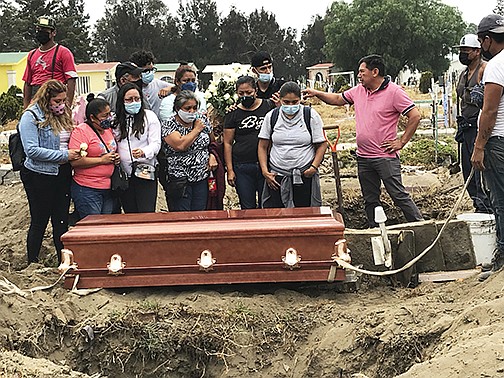MEXICO CITY -- The Mexico City elevated subway line that collapsed this week, killing 25 people, was problem-plagued and poorly designed from the day of its inauguration in 2012, but few expected it would collapse.
However, an official 2017 survey of damage caused by a 7.1-magnitude quake showed indications of construction defects that should have shut the line down immediately, according to an experienced structural engineer.
Jose Antonio Lopez Meza, a seismic and structural engineering consultant, said the defects detected in the subway system report -- a sagging section of too-weak steel near the latest accident -- is the kind of thing that could have contributed to Monday's collapse.
Instead, authorities decided on quick patches, welding props under the bowed beams and reopening service.
"Here in Mexico, nothing is taken care of until a tragedy occurs," said Lopez Meza.
[Video not showing up above? Click here to watch » https://www.youtube.com/watch?v=KeQMFnogW-k]
But authorities weren't concentrating on structural defects. They had their hands full over the past decade simply trying to keep the subway train on its tracks, to avoid what could arguably have been have an even worse accident than Monday's collapse involving two subway cars.
The $1.3 billion No. 12 Line, the newest section of a vast subway system opened in 1969, was ill-fated from the start. The so-called Gold Line cost half again as much as projected, suffered repeated construction delays and was hit with allegations of design flaws, corruption and conflicts of interest.
A top executive of one of the companies that built it was the brother of the man who oversaw the project for the government.
Mayor Claudia Sheinbaum announced Wednesday that all the city's road bridges, overpasses and elevated subway lines would be checked. Many use construction techniques similar to the one that collapsed. President Joe Biden said the U.S. stands ready to help Mexico.
Reports by engineering firms revealed former Mayor Marcelo Ebrard's city government had made a series of startlingly wrong choices when the subway line was designed and built between 2008 and 2012.
Experts said unusually sharp curves in the route exacerbated problems with the wheels-on-steel track design, which more resembles New York's subway rather than the European-style rubber tires used on the rest of the system.
In 2014 -- just 17 months after it began service -- the Gold Line had to be shut down for months for the tracks to be replaced or ground into shape.
After investigations into the design and corruption scandals, more than 38 government employees were hit with fines or other punishments for improperly contracting out work on the train, as well as some criminal charges.
A 2014 congressional report concluded that the line should have used rubber-wheel suspension, rather than railroad-style steel wheels, but by then it was too late to change.
Not far from the site of that crash, a city report on the 2017 quake had detailed damage to the base of a vertical column supporting the tracks. It had cracked and shed its outer layers of concrete because there were not enough steel rebar stirrups in it.
In 2017, authorities patched and widened the column by injecting resins, swathing it in carbon fiber and building a jacket of additional rebar and concrete around the base.
While the problem with a lack of rebar might have been repeated throughout the hundreds of columns on the line, Lopez Meza said it probably wouldn't have contributed directly to Monday's collapse.



